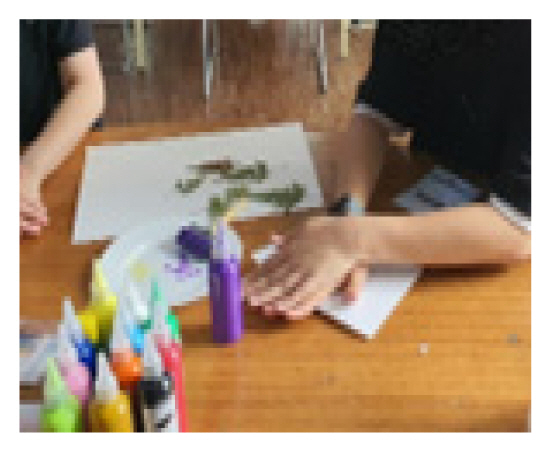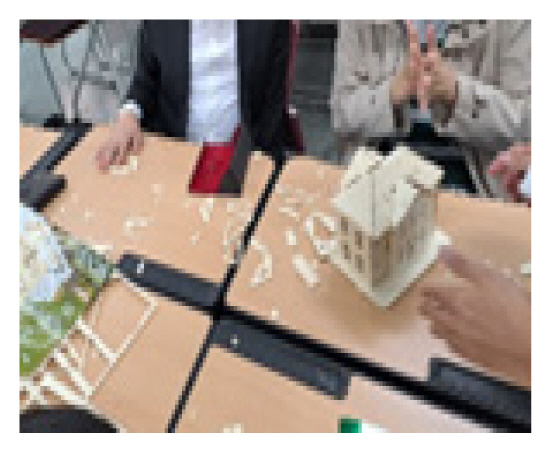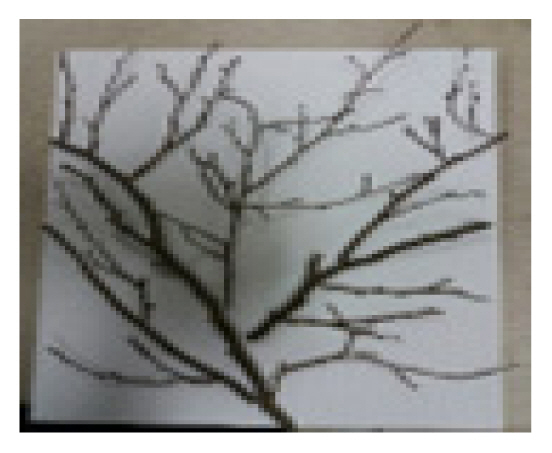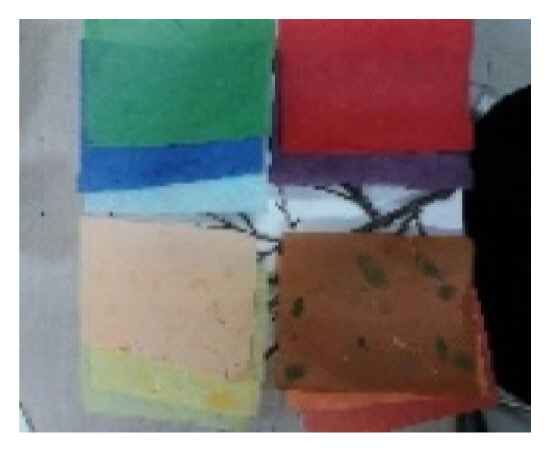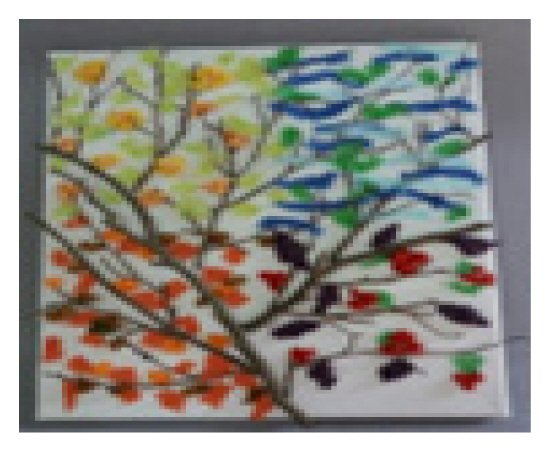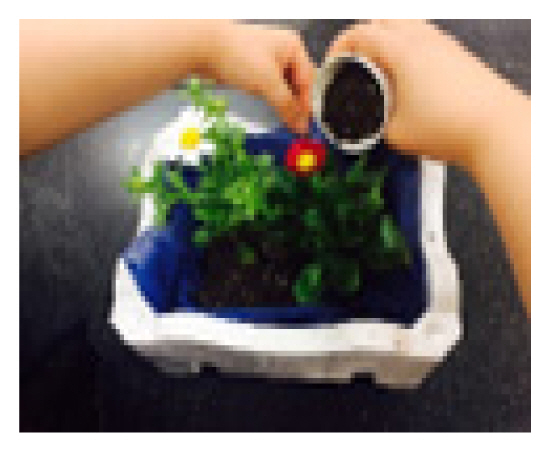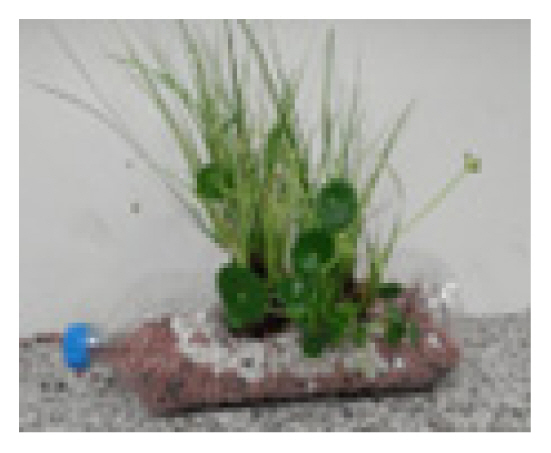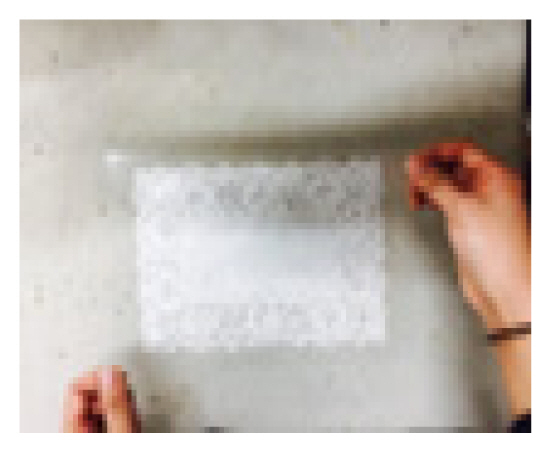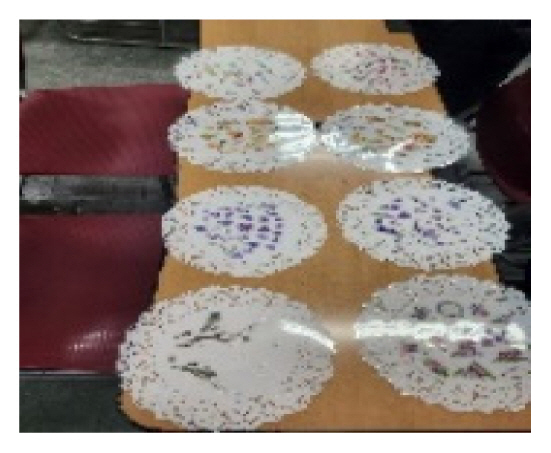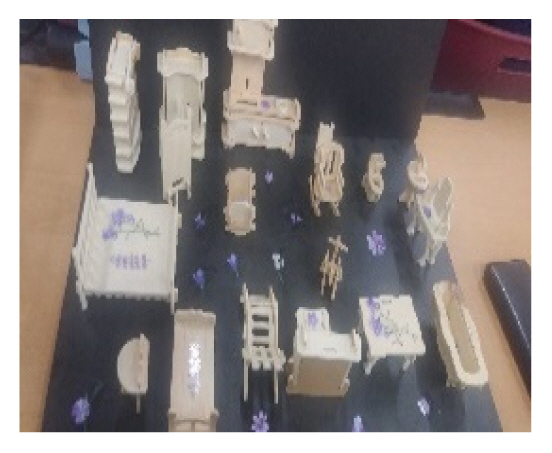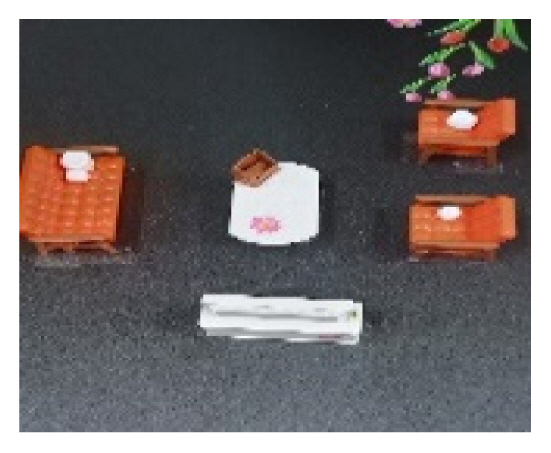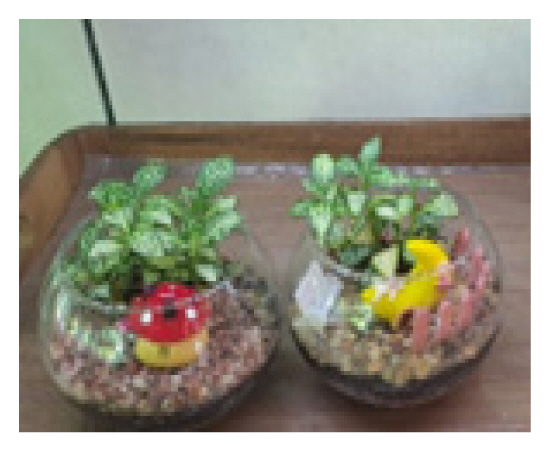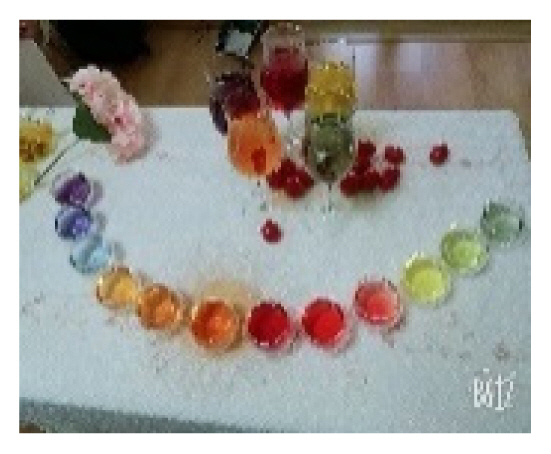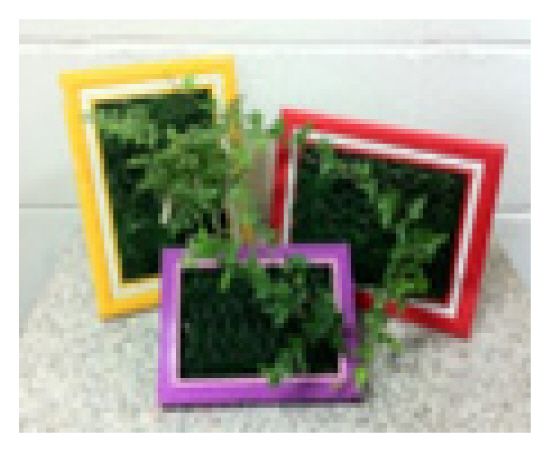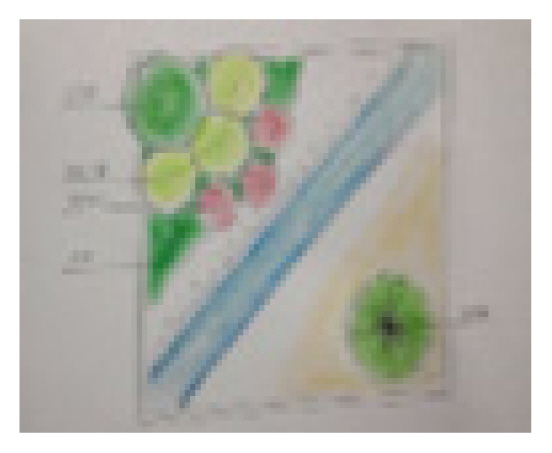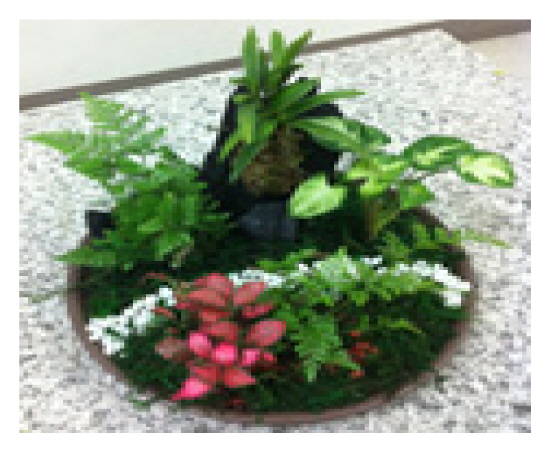The Effect of Green Interior Programs for College Students with Developmental Disabilities on Plant Familiarity
Article information
Abstract
Background and objective
The purpose of the study was to examine the effects of green interior (greenterior) programs on the plant familiarity of college students with developmental disabilities (CSDDs). To this end, this study developed a horticultural education program based on greenterior contents for CSDDs.
Methods
In the first step, a greenterior program was defined by a focus group composed of specialists from industry and academia. In the second step, ten sessions of the greenterior program were performed. In the third step, the effects of the program on plants familiarity scale for CSDDs were examined. Participants in this study were 30 CSDDs in N university, with 15 students as the experiment group and 15 as the control group.
Results
When plant familiarity in experimental and control groups before and after the greenterior program were compared, it was found that the mean of the control group had slightly decreased, showing no statistically significant differences (p = .795). On the other hand, the experimental group showed a statistically significant increase in the mean for plant familiarity (p = .000). This result demonstrated that the program has a positive effect on the plant familiarity of CSDDs. This demonstrated that the greenterior program had more positive effects on plant familiarity in the experimental group than in the control group.
Conclusion
These findings suggest that the greenterior program was not only effective in improving the plant familiarity of CSDDs, but also had positive effects in the cognitive, affective, and psychomotor/kinesthetic domains. This study can make a significant contribution in providing basic data for implementing greenterior programs to help CSDDs get familiar with plants in horticulture learning.
Introduction
With a growing social consensus on the need for comfortable and healthy indoor environment management since the COVID-19 pandemic, there has been a rising interest in actively introducing the concept of green interiors (greenterior)-which organizes a space aesthetically while emphasizing the air purification function-into daily gardening classes for people with developmental disabilities (PDDs). It is particularly meaningful to build a connection with nature in college students with developmental disabilities (CSDDs), who are enamored with their phones and find it hard to socialize. This entails helping them understand respect for living things by caring for their environment and plants, and learning the value of human connections (Kim, 2023). Furthermore, by taking an interest in the environment and developing a caring attitude toward plants, developmentally disabled students-who often feel intimidated by being isolated from people around them-will naturally form interpersonal relationships in this space (Park, 2018) and will build the emotional groundwork necessary to proactively learn a variety of social skills in the future. In this study, we developed a green interior program for CSDDs, based on the idea that space facilitates the formation of interpersonal relationships (Kim, 2023). The program consisted of helping them become familiar with plants through green interior activities, using plants as a medium. We also sought to confirm the effects of this program on their familiarity with plants. Therefore, the purpose of this study was to determine whether the greenterior program affects plant familiarity of CSDDs. Plant familiarity refers to the degree to which students observe plants with interest, or feel interested in them (Lee, 2012). Greenterior, a portmanteau of the words "green" and "interior," refers to indoor spaces that incorporate plants with the goal of cultivating environmentally friendly attitudes, toward the broader aim of improving the well-being of society (Lim, 2007); as an activity that decorates living spaces with plant materials and discovers aesthetic beauty, it goes beyond the simple introduction and planting of plants, and includes designing according to the characteristics of the space using art media. In other words, greenterior is a comprehensive approach that applies design principles based on the nature of the space focused on various types of living things, along with inanimate materials, in various types of human-created indoor and outdoor spaces, thereby creating a more economical, beautiful, and functional space to enable a higher quality of life (Chung, 2020). However, as there are limitations when it comes to introducing professional interior design work into programs for PDDs, we planned to introduce storytelling to build rapport with the participants at the beginning of the program, given that immaturity in communication and self-expression are characteristics of PDDs. As such, we designed the program in detail through interviews with a focus group (FGI) of specialists in horticulture, rehabilitation, and art education, to validate changes in plant familiarity. The introduction of storytelling was based on the theory that when speakers and listeners interact, stories have the effect of facilitating an understanding of concepts (Han, 2019). In addition, the following served as the academic background: previous findings that greenterior programs have positive effects on elementary school students' plant familiarity (Chung, 2020) and that horticultural therapy is effective in improving elementary school students' plant familiarity (Lee, 2012); as well as many studies suggesting that horticultural education has a significant effect on character education (Jang, 2019; Kwack et al., 2007; Lee et al., 2019). Therefore, based on the findings of this study, which examined the effect of a greenterior program tailored to CSDDs on their plant familiarity, we expect in the future that different horticultural education programs, such as greenterior, will be used as an area of social integration and self-reliance education for PDDs.
Research Methods
Research subjects and period
Research subjects (participants) were recruited from the Department of Rehabilitation and Independence (Specialized Division of Developmental Disabilities) at N University, located in Cheonan. The department, targeting people with developmental disabilities, is divided into tracks based on the type of work they are interested in. Students enrolled in the Horticulture Track and taking a horticulture course were given an explanation about the greenterior program and how they could participate in the program as an exercise tied to the course. Written informed consent was obtained from students and their parents who agreed to participate in the program, and the program was implemented, targeting only such students. In addition, IRB verification of the program (IRB-Nazarene University-2023-37) was completed through deliberation by the N University Bioethics Committee. Class A, the experimental group, consisted of 15 participants who took the plant-related practical course. For Class B, the control group, although 17 students were selected from the same Specialized Division of Developmental Disabilities who did not participate in the program and instead took other courses that focused on general theory at the same time, only 15 students ultimately participated, as two who withdrew during the consent form completion process were excluded. The participants met the following criteria: Both participants and their guardians provided informed consent to participate in the program; the students were college students who met N University's academic ability standards and had a borderline or mild developmental disability (Level 3 Developmental Disability); and the participants held a registration card or welfare card for the disabled as per Article 32 of the Act on the Welfare of Persons with Disabilities. The gender composition was 11 males and 4 females for Class A, and 12 males and 3 females for Class B. The research personnel included a facilitator with a doctoral degree in horticulture, an assistant facilitator with a master's degree in rehabilitation, and a lecturer who majored in art.
Research design
The program consisted of 10 sessions with a three-stage structure, as follows. Taking into account cognitive, affective, and psychomotor/kinesthetic domains based on familiarity components, in the introduction stage of each session, space-related storytelling was used to establish rapport. In the development stage, greenterior items were produced based on what was understood through the storytelling. In the finishing stage, the focus was on arranging the space and utilizing the items. The program was scheduled for 10 sessions from October to November 2023 to allow for full implementation in connection with the course, excluding periods such as exams and orientation field training in the academic schedule. The program was intended not only to help CSDDs experience it and develop correct values about plants and their surroundings, but also to make it easier for them to understand space-related things through storytelling based on their interaction as speakers and listeners, thereby fostering their interest in the living environment and developing their design skills using plants. To this end, the program, with the structure of introduction, development, and finishing steps was designed in detail in consultation with the expert group (FGI), as shown in Table 1.
Program content
The content of the program was designed to enhance comprehension of space and plants by incorporating storytelling into each session. Sessions 1–3 covered the cognitive domain, which encompassed fundamental knowledge and general understanding of plants. Sessions 4–6, which comprised the middle stage, focused on allowing participants to express their emotions in the affective domain and become familiar with plants by creating aesthetic interior ornaments and applying them to space. Sessions 7–9 enhanced the psychomotor/kinesthetic domain through cooking activities that promote physical health, and creating works that require body coordination. Each session lasted for 2 hours, with an introduction (storytelling and preparation for practice) in the first class, and development (practice in making interior decorations) and finishing (space arrangement, presentation and cleanup) in the second class. Easy-to-access design techniques, such as printmaking, collage, image drawing, and miniature model production among art media, were appropriately used considering those who have difficulty drawing.
While conventional horticultural education focuses on plant cultivation and hands-on activities, this program, a greenterior program tailored to the needs of CSDDs, offers a unique approach through the following features. The program sought to improve participants' cognitive understanding by having them watch videos of plant use cases applied to different spaces and engage in conversations with researchers about each space in a storytelling manner. Furthermore, it encompasses the steps of having them create greenterior decorations and arrange them in spaces. Considering the cognitive, affective, and psychomotor/kinesthetic capabilities related to the detailed domains of plant familiarity in Table 2, a focus group of experts was consulted to obtain advice for this study. A review was also requested from professionals in the fields of horticulture, art, and rehabilitation with consideration of CSDDs' understanding. In this study, the classification of the detailed domains of plant familiarity into cognitive, affective, and psychomotor/kinesthetic tendencies was adapted for CSDDs, based on Lee's (2012) and Chung's (2020) classification criteria for plant familiarity of elementary school students. Table 2 shows the specifics of each session. The cognitive domain was divided into growing conditions, plant classification, and increased integrated thinking. The affective domain included emotional stability, stress management, and character development. The psychomotor/kinesthetic domain was divided into environmental and dietary effects. The specifics were created by referring to the data suggested by Bae and Park (2018) and considering the participant's performance abilities. During Session 1, participants were introduced to different types of plants through storytelling about the wonderful world of plants. They then observed a collected and dried Neprolepis obliterata, and used acrylic paint and a printmaking technique called planographic printing to stamp its shape and create hanging scrolls for wall decoration. In Session 2, after being presented with a story about how a house is made, participants constructed a house model using a kit and created plant sculptures using floral foam and Aspidistra elatior to arrange them in the model. This activity enhanced their understanding and integrated thinking about the relationship between space and plant sculpture. During Session 3, participants were presented with a story about the four seasons paired with trees to help them understand the four seasons from a plant physiological perspective and create color images of the four seasons with colored paper on canvas. This activity affected the cognitive domain by helping students understand growing conditions. Thus, framed canvas works were created using colored paper through a collage technique. During Session 4, after appreciating the stories of urban farmers through storytelling, participants created a mini garden using recycled materials that were discarded in urban areas. This activity enabled them to understand the benefits of urban gardens, and resource recycling. During Session 5, after enjoying storytelling about theme gardens and party decorations, participants created placemats using a flower-pressing technique, which can be used as table decorations for parties. During Session 6, participants were presented with a story about air purification in residential spaces and indoor gardens to aid their comprehension of terrarium principles. They were then tasked with creating a model of a residential space, and a terrarium to serve as decoration for a small indoor area. During Session 7, participants watched a video showcasing the botanical garden cafe and listened to a story about plants and health. They then created and tasted canapés with edible flowers and fruits, as well as vegetable salad. They also recreated a dessert cafe, a commercial space, and presented ideas for improving eating habits to promote physical health. During Session 8, participants were presented with a storytelling about fine dust and air purification. They were also provided an explanation of the effects of wall gardens for air purification, along with relevant examples. Finally, they were asked to create a framed moss topiary garden. During Session 9, participants were introduced to community gardens through a story about gardens that people wanted to share. They collaborated in groups to draw a blueprint for a garden they wanted to share, and then cooperatively constructed it. Notably, throughout the design process, they actively communicated through group discussions. In Session 10, participants presented a story about their dream garden they would like to have in the future, and arranged their completed works in the form of a mini garden.
Assessment tool and analysis method
Assessment tool
Plant familiarity
Participants' familiarity with plants was assessed in terms of their knowledge learned about plants and eco-friendly decoration of living spaces. The assessment tool used in this study was adapted to suit the level of understanding of CSDDs, by referring to Lee's (2012) plant familiarity test designed for horticultural therapy programs, Chung's (2020) plant familiarity test for elementary school students, and plant familiarity test data presented by Bae and Park (2018). This test tool consisted of a total of 24 questions, broadly divided into cognitive, affective, and psychomotor/kinesthetic domains. According to Bae (2018), the cognitive domain is divided into growing conditions, plant classification, integrated thinking enhancement, and career guidance; the affective domain is divided into emotional stability, stress management, and character development; and the psychomotor/kinesthetic domain is divided into environmental and dietary effects. Of these, the psychomotor/kinesthetic domain, which is one of the three domains of human behavior change pursued for educational purposes, refers to sub-domains including health, and skilled, professional, artistic functions. For this study, it was adjusted and classified as shown in Table 2. The reliability test (Cronbach's α) of the assessment tool found that the overall plant familiarity was 0.882, and the reliability for each specific domain was 0.766 for the cognitive domain, 0.821 for the affective domain, and 0.618 for the psychomotor/kinesthetic domain, as shown in Table 2.
Analysis method
The data collected were analyzed using IBM SPSS Statistics 21.0. Since the use of parametric statistical methods requires the assumptions of normality and homoscedasticity be satisfied, the Koimogorov-Smimov test and the Shapiro-Wilk test were performed to test the normality of the two sample groups. The results showed that the homoscedasticity and normality were proven as p>0.05, so parametric statistical methods were used. Before implementing the program, the homogeneity between the two groups was tested using an independent t-test. As the p-value of Levene's test was >0.05, it was confirmed that the group was homogeneous. A paired t-test was conducted to analyze the significant difference between the two groups before and after the program.
Results and Discussion
Pre-test for homogeneity between groups
Before the analysis, the final population size was 15 for the experimental group and 15 for the control group. Since the population size of each group was in the range of 10 to 30, the normality was checked. As a result, the following tests were used to confirm normality: in the Koimogorov-Smimov test, p = .167 > .05 for the experimental group and p = .200 > .05 for the control group; in the Shapiro-Wilk test p = .183 > .05 for the experimental group and p = .615 > .05 for the control group. Therefore, a paired t-test could be performed.
Table 3 shows the analysis results of the t-test performed to verify the homogeneity of the two groups, the control and the experimental groups, before the implementation of the greenterior program. As the three sub-domains of plant familiarity assessment in this study, the cognitive domain (p = .172), the affective domain (p = .066), and the psychomotor/kinesthetic domain (p = .165), as well as the overall plant familiarity were all p > .05, there was no significant difference in both groups. The p-value of Levene's test for homoscedasticity was p = .801 > .05 for the cognitive domain, p = .211 > .05 for the affective domain, p = .084 > .05 for the psychomotor/kinesthetic domain, and p = .052 > .05 for plant familiarity. In other words, the control and the experimental groups were found to be homogeneous, so this study could proceed.
Within-group pre- and post-test
After implementation of the greenterior program, the three sub-domains of the plant familiarity assessment (cognitive, affective, and psychomotor/kinesthetic domains) and the overall plant familiarity of the control and experimental groups were analyzed using a paired t-test. For the control group, it was found that there were no significant differences in any of the domains: cognitive domain (p = .294), affective domain (p = .856), psychomotor/kinesthetic domain (p = .130), and plant familiarity (p = .795). Meanwhile, the experimental group showed statistically significant differences in all sub-domains after the greenterior program: cognitive domain (p = .000), affective domain (p = .000), and psychomotor/kinesthetic domain (p = .000), and plant familiarity (p = .000). In other words, the greenterior program had a positive effect on both plant familiarity and all sub-domains of CSDD.
Plant familiarity
For the greenterior program, we chose the dormitory of N University, which is a living experience type space rather than a classroom, as the training site with the aim of using plants in living spaces. It seems that students could gain familiarity with plants more easily than in theoretical classes by practicing spatial design activities closely related to daily life. This involved using the kitchen and living room to decorate the space with plants, including table decorations and planteriors, as well as making interior accessories. Notably, this is consistent with the finding that these life-related programs stimulated active participation among elementary school students as they increased their concentration and grew their interest in plants and learning (Lee, 2012). It appears that CSDDs' familiarity with plants was naturally increased as they were exposed to plants in their daily lives, which increased their concentration (Kim, 2020). In addition, this result (Table 4) can be interpreted based on the report that the level of developmental disability of the participants in this study (Level 3 Developmental Disability) is equivalent to that of a third grade or higher student in elementary school (Park, 2018). Consequently, it was confirmed that the greenterior program, which focuses on the use of living space, is effective in promoting participants' interest in and familiarity with plants.

Before and after-greenterior program comparison of the plant familiarity in control and treatment groups
Cognitive domain
As shown in Table 5, the experimental group showed significant improvements in the cognitive domain, while the control group showed no significant changes. It appeared to contribute to cognitive improvement to understand the space for greenterior design and utilize plants by drawing a floor plan, observing the surroundings to select plants, or drawing and coloring. This result is supported by the findings of Kim (2022) that botanical art programs, which involve detailed observation and drawing, have an effect on participants' recognition of plant species and growing conditions, and that drawing detailed pictures of plants increases their integrated thinking. It is also consistent with findings suggesting that programs using art media have an effect on improving the cognitive abilities of adolescents with developmental disabilities (Park, 2010). Notably, it seems to be supported by Relf's (1981) theory. According to Relf's theory, through horticultural therapy programs, participants learn new knowledge, enjoy storytelling about space with their friends, and then talk about and interpret what they have observed. This allows them to develop their judgment and situational coping skills, and naturally learn how to manage plants, thereby improving their intellectual abilities.
Affective domain
The improvement results in the affective domain, as shown in in Table 6, seem to be in line with the results of many previous studies, including the findings: that through a program with nature, the participants developed their character and stabilized their emotions while decorating a living space together, sharing opinions, and understanding each other (Chung, 2020), and that growing and caring for plants develops character traits including responsibility and consideration (Jang, 2019; Kim, 2020; Kwack et al., 2007). In addition, it seems that decorating a living space with decorations that incorporate plants increases psychological satisfaction with the space, thereby creating a sense of stability, and that organizing and beautifying one's surroundings ultimately helps cultivate positive emotions. This is consistent with the suggestions that modern people are highly interested in design and aesthetic environments (Lim, 2007), and that their emotions are stable in aesthetic environments (Park, 2010). In addition, it is also in line with previous study findings suggesting that horticultural therapy programs with plants affect emotional stability and personality (Jang et al., 2015). It seems that handling plants creates an attitude of respect and care for life, which improves the affective domain. Meanwhile, in terms of emotional stability, plants promote the generation of alpha waves in the brain, and looking at green plants has the effect of reducing tension and alleviating various stress indicators, including pulse, blood pressure, skin, and the stress hormone, cortisol (Kwack, 2007). Kwack's findings seem to scientifically support this study's finding that the greenterior program is effective for emotional stability.
Psychomotor/kinesthetic domain
The psychomotor/kinesthetic domain refers to sub-domains including health, and skilled, professional, and artistic functions among the domains of human behavior change (cognition, affective, and psychomotor/kinesthetic domains) pursued through education (Chung, 2020). Accordingly, psychomotor/kinesthetic satisfaction with the program, as shown in Table 7, seems to result from the following: introducing the story of a dessert cafe space using fruits and vegetables to the program and providing it to the participants in a storytelling manner, and allowing them to experience dining spaces by making canapé desserts with edible flowers, as well as fruit salads, and table decorations. Notably, after observing botanical garden cafes online, the participants enlivened the dormitory of N University, a living experience space, with the atmosphere of such a cafe by engaging in food styling using tea and dessert as table decorations. In this manner, it appears that promoting their understanding by explaining the relationship between the atmosphere of the dining space and health to them through a story served to increase their interest in health. Moreover, it seems that cooking and eating food together in the process of creating table decorations with plants increased high psychomotor/kinesthetic satisfaction. Allowing the participants to decorate tables, among the greenterior spaces, with fruits and vegetables, and educating them about nutritional values such as "nutrition from the garden," while including health-related information, may also be related to the high levels of satisfaction. Furthermore, this result seems to be supported by reports on the health effects of such programs (Kwack et al., 2007). Meanwhile, considering the psychomotor/kinesthetic domain is related to physical and mental health, and the greenterior program requires substantial hand-eye coordination in the process of arranging spaces, the result can be seen as consistent with those of a previous study reporting that gardening activities are related to the body and help develop coordination and balance between the eyes, hands, and feet, as well as sense of space and gravity. In addition, their increased interest in and understanding of the indoor environment and health, through the wall greening session in relation to air purification, seem to have led to the high improvement shown in Table 7.
Conclusion
In this study, we surveyed the effects of a program using a greenterior concept on plant familiarity and specific factors in CSDDs. By examining the changes in plant familiarity before and after the program in the control and experimental groups, it was found that the experimental group had a significant difference in both overall plant familiarity and the specific factors, while the control group did not have a significant difference. Therefore, it seems that the greenterior program has a significant effect on plant familiarity and detailed factors. Regarding the detailed factors, the experimental group that participated in the program showed statistically significant differences in all three sub-domains (cognitive domain (p = .000), affective domain (p = .000), psychomotor/kinesthetic domain (p = .000)) as well as in plant familiarity (p = .000). For the control group that did not participate, there was no statistically significant difference in any of three sub-domains of plant familiarity: cognitive domain (p = .294), affective domain (p = .856), or psychomotor/kinesthetic domain (p = .130). Given the characteristics of developmental disabilities, the greenterior program, which introduced storytelling and was based on plant experiences in living spaces, was effective in helping CSDDs become familiar with plants. In addition, it brought about significant improvements in all domains of plant familiarity, including the cognitive, affective, and psychomotor/kinesthetic domains. Plant familiarity refers to having an interest in plants and a desire to get close to them. Having a familiar attitude toward plants is also interpreted to mean that one naturally acquires a grounding in values such as an understanding of and consideration for life. Therefore, the findings of this study can be meaningfully applied to CSDDs with autistic tendencies who have difficulty organizing and managing their surroundings and lack understanding and interest in others. Although the effect of the greenterior program on CSDDs' plant familiarity, which was set as a research subject, was confirmed, the findings have limitations when it comes to generalizing them to all PDDs because the program was run for a short period of 10 sessions, and the participants consisted only of CSDDs at N University. For follow-up research, various participant-specific studies should be considered. In addition, to integrate and educate CSDDs and non-disabled college students in the changing college education environment of a rapidly changing era, we propose that greenterior programs be used as life education for CSDDs to help them realize the need to manage their own minds and bodies, manage the surrounding space, and be considerate of living beings, including plants. We expect that the findings of this study will be used as baseline data to develop various educational models for indoor gardening.







